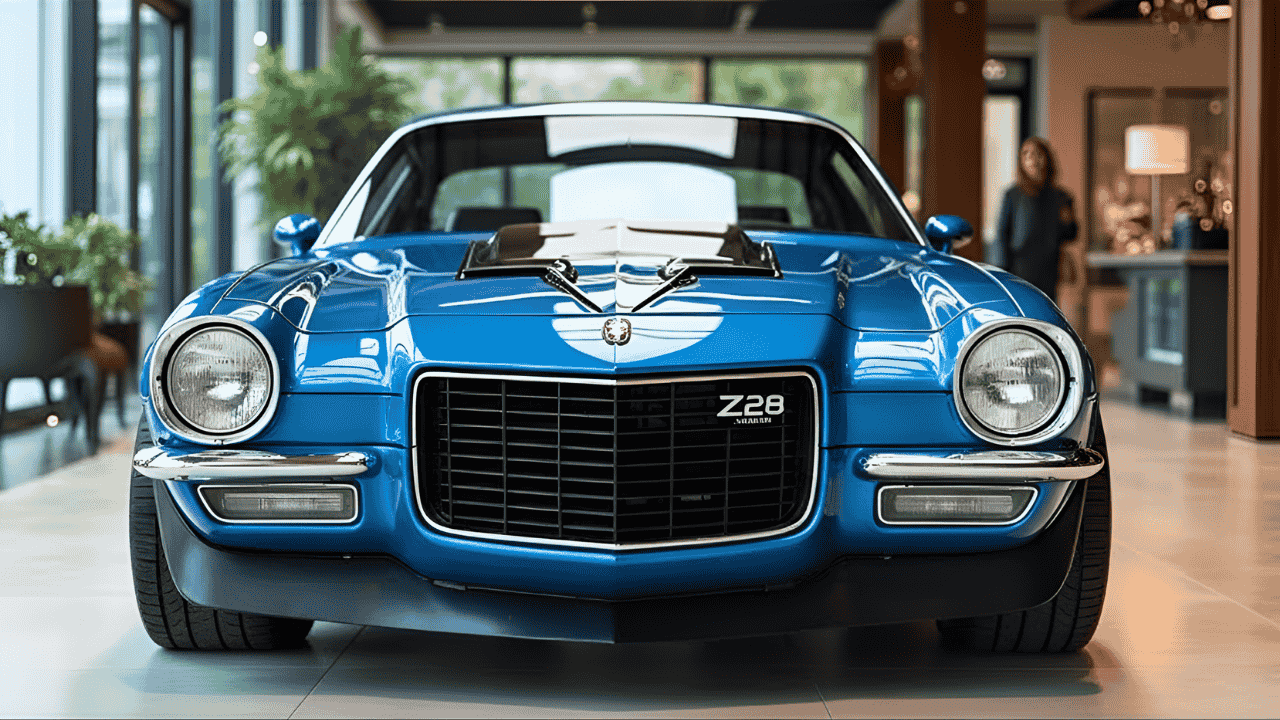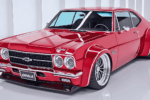When it comes to American performance, few cars spark as much passion as the 1970 Chevrolet Camaro Z28. It was a machine built during the golden era of muscle, a time when raw power, aggressive styling, and driver connection defined performance. But with today’s high-tech modern muscle cars pushing boundaries of speed and innovation, how does the iconic 1970 Z28 hold up against today’s performance monsters? The answer might surprise you.
What is the legacy of the 1970 Chevrolet Camaro Z28
The 1970 Camaro Z28 represented a perfect balance of power and handling. Born from Chevrolet’s racing DNA, it was more than just a straight-line performer. it was a car that could tackle corners with confidence. Under the hood sat the legendary 350-cubic-inch LT-1 V8 engine producing 360 horsepower and 380 lb-ft of torque. That may not sound extreme by today’s standards, but in 1970, it was a beast.
The Z28 was equipped with a 4-speed manual gearbox, heavy-duty suspension, and power-assisted front disc brakes features that gave it race-ready performance straight from the showroom. The combination of light weight, precise steering, and explosive acceleration made it one of the most respected Camaros ever built. It wasn’t just a muscle car it was a true driver’s car designed for enthusiasts who valued balance as much as brute strength.
When the 1970 Camaro Z28 became a legend among muscle cars
The 1970 Z28 arrived at a time when muscle cars ruled the roads and drag strips. Competing with icons like the Ford Mustang Boss 302, Dodge Challenger R/T, and Plymouth ‘Cuda, the Z28 quickly earned its place among legends. Its sleek second-generation body design gave it a lower, wider stance compared to the first-generation Camaro, improving both aerodynamics and road presence.
Car magazines of the era praised the Z28 for its remarkable blend of agility and speed. It could sprint from 0 to 60 mph in just 5.8 seconds impressive for a naturally aspirated car in 1970. More importantly, it felt composed in corners, unlike many of its rivals that were designed purely for drag racing. This dual personality made it a favorite among serious drivers and helped cement its reputation as one of the greatest muscle cars of all time.
How modern muscle cars compare to the 1970 Z28 in performance
Fast-forward more than five decades, and today’s muscle cars are technological marvels. Machines like the 2024 Chevrolet Camaro ZL1, Dodge Challenger Hellcat, and Ford Mustang GTD push well over 650 horsepower, using advanced electronics, turbocharging, and aerodynamic wizardry to achieve mind-blowing performance.
On paper, the 1970 Z28 doesn’t stand a chance. A modern ZL1 can hit 0 to 100 km/h in under 3.5 seconds and reach top speeds exceeding 300 km/h numbers the original Z28 could only dream of. Modern traction control, dual-clutch transmissions, and adaptive suspension give new muscle cars surgical precision.
But raw numbers don’t tell the full story. Where the 1970 Z28 shines is in its connection between car and driver. There are no computers, no driving aids just pure mechanical engagement. Every gear change, every rumble of the V8, and every slide through a corner is controlled entirely by the driver. It’s an experience that today’s high-tech cars, no matter how fast, can rarely replicate.
What makes the driving experience so different between eras
The 1970 Camaro Z28 delivers a raw, analog experience that reminds you why muscle cars captured America’s heart. The steering is heavy, the suspension stiff, and the exhaust note loud enough to make every drive feel like a celebration of power. It demands respect from the driver every mistake is yours, but every triumph feels earned.
In contrast, modern muscle cars offer refinement and control that make them incredibly easy to drive fast. Advanced aerodynamics, electronic stability control, and performance mapping systems make it possible for even average drivers to extract stunning lap times. But for some purists, that digital safety net dilutes the thrill that made classic cars so special.
It’s the difference between art and engineering the 1970 Z28 feels alive, unpredictable, and emotional, while modern muscle cars feel composed, intelligent, and unshakably fast.
How technology has transformed modern muscle cars
The evolution of muscle cars reflects how far automotive engineering has come. Today’s machines benefit from lightweight materials, fuel injection, turbocharging, and active suspension systems. They also meet strict emission standards while delivering more power than ever before.
Modern Camaros, for example, use magnetic ride control and aerodynamic tuning to handle corners like European sports cars. Meanwhile, engines like the supercharged LT4 V8 in the Camaro ZL1 offer immense torque and instant throttle response. These advances make modern muscle cars not only faster but also more comfortable, safer, and fuel-efficient than their classic counterparts.
However, with all this sophistication, something has been lost the simplicity and character of classic muscle. The 1970 Z28 was built in a time when cars were an extension of human skill, not electronic programming. That’s what makes it so emotionally engaging even today.
When nostalgia meets modern innovation on the track
Enthusiasts who have driven both classic and modern Camaros often describe it as comparing two entirely different experiences. On the track, a modern Camaro ZL1 will easily outrun the old Z28 in every measurable way lap times, acceleration, braking, and cornering grip. But when it comes to the joy of driving, many still find themselves drawn to the older car.
The sound of the carbureted LT-1 engine, the scent of gasoline, and the tactile feedback of the gear lever create a sensory connection that’s hard to replicate in modern vehicles. It’s this nostalgia this raw, visceral energy that keeps the 1970 Z28 timeless.
What the 1970 Camaro Z28 still teaches modern performance cars
The 1970 Camaro Z28 remains a symbol of balance, passion, and mechanical purity. It proves that a great car isn’t defined solely by speed, but by how it makes the driver feel. Modern muscle cars have evolved into hyper-powered machines with incredible capabilities, but the essence of driving the connection between human and machine was perfected long ago.
In today’s world of electronic precision and hybrid systems, the 1970 Z28 reminds us of a time when driving was more about instinct than algorithms. It’s a living piece of history that continues to inspire modern designs and engineering philosophies.
How the legend of the 1970 Z28 lives on
More than fifty years later, the spirit of the 1970 Chevrolet Camaro Z28 lives on in every modern Camaro. Its influence can be seen in the aerodynamic lines, powerful engines, and track-focused engineering of today’s models. But beyond its legacy of performance, it represents an era of freedom, individuality, and pure automotive passion.
While modern muscle cars may be faster, smarter, and more advanced, the 1970 Z28 remains untouchable in its charm and authenticity. It’s a reminder that true legends aren’t just measured by numbers but by the memories they create and the emotions they ignite every time the engine roars to life.



